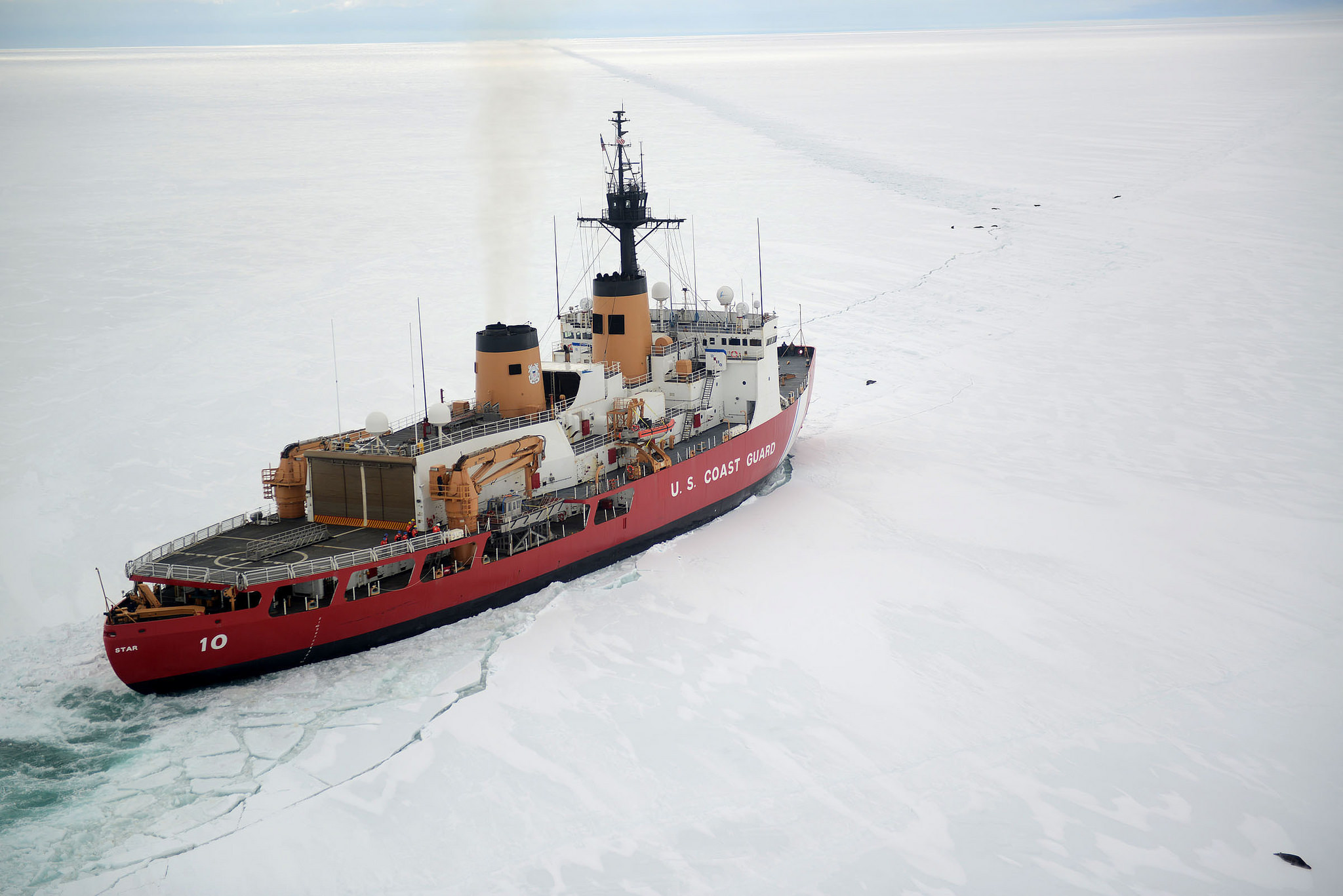The Coast Guard’s new Arctic strategic vision downplays a big problem: budget constraints
The U.S. Coast Guard has an updated strategic vision for the Arctic. But it's not clear Congress and the White House are willing to pay what it will cost.

The 2019 update of the U.S. Coast Guard vision for the Arctic is a document rich with bureaucratic language about the growing importance of the region to Washington.
The demand for Coast Guard services in the Arctic, both for commercial and military purposes, will continue to grow as the extent of ice cover shrinks.
[The US Coast Guard’s new Arctic strategy highlights geopolitics and security]
“The resurgence of nation-state competition has coincided with dramatic changes in the physical environment of the Arctic, which has elevated the region’s prominence as a strategically competitive space,” the Coast Guard concludes.
Russia, which has added 14 icebreakers to its fleet since 2013, and China, which has conducted six Arctic expeditions, loom large in the strategic outlook.
“America’s two nearest-peer powers, Russia and China, have both declared the region a national priority and made corresponding investments in capability and capacity to expand their influence in the region,” the report says.
[What the new US Coast Guard strategy tells us about the Arctic in 2019]
Notably missing from the report, however, is a clear acknowledgement that the service is at a severe risk of finding itself unable to cope with the conditions it describes or implement the strategy.
You have to look somewhere other than the pages of the “Arctic Strategic Outlook” to find Coast Guard personnel accurately described as miracle workers for their skill in keeping the single U.S. heavy icebreaker from going dead in the water.
For obvious political reasons, the report does not dwell on the difference between the ambitions for Coast Guard operations and the severe limitations created by its current facilities and budget reductions.
A much different picture emerges when Coast Guard leaders testify to Congress about the challenges they face.
On April 9, when Coast Guard Commandant Adm. Karl Schultz spoke to a U.S. House subcommittee, his message was light on philosophy and heavily focused on practical questions.
The only heavy icebreaker in the U.S. fleet, Polar Star, had just returned from its annual resupply mission to McMurdo Station in Antarctica, Schultz said.
“These missions take a toll and Polar Star’s crew worked miracles, keeping their ship mission viable. They battled a ship-board fire, numerous electrical outages and combated an engine-room flooding situation,” the Coast Guard commandant said.
Close to the icepack, ship’s officers had to send divers into the water to repair a leaking shaft seal.
“I’m proud of their efforts, but I remain concerned we’re only one major casualty away from being a nation without any heavy icebreaking capability,” he said. “New icebreakers will not come fast enough.”
The Coast Guard awarded a contract last week for the first new heavy U.S. icebreaker in four decades, but a big question is whether the Polar Star will last the four years that will pass before the new ship is ready.
Other icebreakers are to follow, but the financing will remain a political challenge.
The operating budget for the Coast Guard has been steadily reduced by inflation over the years and the agency is struggling to keep up.
“We’ve lost about 10 percent purchasing power in the last 8 to ten years,” Schultz said.
The Trump administration continues to want to shift money away from Coast Guard operations to support the border wall with Mexico, reflecting the president’s priorities.
California Rep. Lou Correa, chairman of the House maritime security subcommittee, opposes the Coast Guard budget cuts. He testified that the Trump budget doesn’t go far enough to keep plans for more icebreakers on track.
The Arctic strategy report from the Coast Guard is not completely silent about the lack of resources, admitting that it “does not currently have the capability or capacity necessary to assure access in the high latitudes. This shortfall limits the Coast Guard’s ability to proactively manage risks in the Arctic maritime domain. It also threatens the Nation’s ability to respond to crises in the Arctic, ranging from oil spills to contingency operations.”
Future decisions on funding for more icebreakers will depend on the White House and Congress, which will determine how the U.S. responds to the strategic challenges posed by competition and cooperation.
If the agency had the freedom to be more open about its challenges, it would no doubt highlight the slow pace of the American government to invest in the facilities needed to carry out ambitious goals, described by its commandant as “the leadership and sustained surface presence necessary to protect our rights and sovereignty as an Arctic nation.”
Dermot Cole can be reached at de*********@gm***.com.